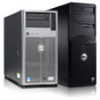Dell PowerEdge XL 5133-4 MXL 10/40GbE Switch IO Module FTOS Command Reference - Page 157
Setting Auto-Negotiation Options, Table 10-4.
 |
View all Dell PowerEdge XL 5133-4 manuals
Add to My Manuals
Save this manual to your list of manuals |
Page 157 highlights
Figure 10-19. show interfaces status Command Example FTOS#show interfaces status Port Description Status Speed Te 0/1 Down Auto Te 0/2 Down Auto Te 0/3 Down Auto Te 0/4 Down Auto Te 0/5 Down Auto Te 0/6 Down Auto Te 0/7 Down Auto Te 0/8 Down Auto Te 0/9 Down Auto Te 0/10 Down Auto Te 0/11 Down Auto Te 0/12 Down Auto Te 0/13 Down Auto [output omitted] Duplex Vlan Auto -Auto -Auto -Auto -Auto -Auto -Auto -Auto -Auto -Auto -Auto -Auto -Auto -- In Figure 10-19, several ports display "Auto" in the Speed field, including port 0/1. In Figure 10-20, the speed of port 0/1 is set to 100 Mb and then its auto-negotiation is disabled. Figure 10-20. Setting Port Speed Example FTOS#configure FTOS(conf)#interface tengig 0/1 FTOS(Interface 0/1)#speed 100 FTOS(Interface 0/1)#duplex full FTOS(Interface 0/1)#no negotiation auto FTOS(Interface 0/1)#show config ! interface TenGigabitEthernet 0/1 no ip address speed 100 duplex full no shutdown Setting Auto-Negotiation Options The negotiation auto command provides a mode option for configuring an individual port to forced master/ forced slave after you enable auto-negotiation. Caution: Ensure that only one end of the node is configured as forced-master and the other is configured as forced-slave. If both are configured the same (that is, both as forced-master or both as forced-slave), the show interface command flaps between an auto-neg-error and forced-master/slave states. Table 10-4. Auto-Negotiation, Speed, and Duplex Settings on Different Optics Command mode 10GbaseT 10G SFP+ module optics 1G SFP optics Copper SFP 1000baseT Comments Interfaces | 143















